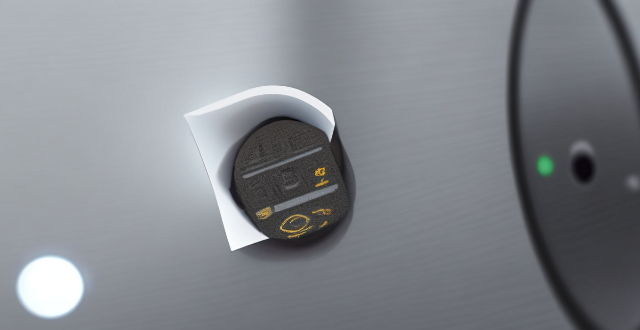The article discusses the process of building a DIY speed controller using components such as a microcontroller, motor driver, power supply, and motor. It outlines the steps required to connect the components together and provides example code for programming the microcontroller to control the speed of the motor based on the input from a potentiometer. The article also mentions that testing and troubleshooting may be necessary to ensure proper operation of the speed controller.

Is it Possible to Build a DIY Speed Controller?
Yes, it is possible to build a DIY speed controller. However, the process can be complex and requires a good understanding of electronics and programming. Here's how you can go about doing so:
1. Choose the Right Components
The first step in building a DIY speed controller is to choose the right components. You will need:
- A microcontroller (such as Arduino or Raspberry Pi)
- A motor driver (such as L298 or TB6612FNG)
- A power supply (battery or AC adapter)
- A motor (DC or stepper motor)
- A potentiometer (to control the speed)
- Wires and connectors
2. Connect the Components
Once you have all the components, you can start connecting them together. Follow these steps:
a. Connect the Motor Driver to the Microcontroller
Connect the motor driver to the microcontroller using male-to-male jumper wires. Connect the following pins:
- VCC to 5V on the microcontroller
- GND to GND on the microcontroller
- IN1 to any digital pin on the microcontroller
- IN2 to another digital pin on the microcontroller
b. Connect the Motor to the Motor Driver
Connect the motor to the motor driver using male-to-male jumper wires. Connect the following pins:
- M+ to one motor terminal
- M- to the other motor terminal
- GND to GND on the motor driver
- VCC to VCC on the motor driver
c. Connect the Potentiometer to the Microcontroller
Connect the potentiometer to the microcontroller using male-to-male jumper wires. Connect the following pins:
- VCC to 5V on the microcontroller
- GND to GND on the microcontroller
- Analog pin to any analog pin on the microcontroller
3. Program the Microcontroller
Now that everything is connected, you can program the microcontroller to control the speed of the motor. Here's a simple example code for Arduino:
int motorPin1 = 3; // IN1
int motorPin2 = 4; // IN2
int potPin = A0; // Analog pin for potentiometer
void setup() {
pinMode(motorPin1, OUTPUT);
pinMode(motorPin2, OUTPUT);
pinMode(potPin, INPUT);
}
void loop() {
int potValue = analogRead(potPin); // Read potentiometer value
int motorSpeed = map(potValue, 0, 1023, 0, 255); // Map potentiometer value to motor speed (PWM)
// Reverse motor direction if potValue is less than 512
if (potValue < 512) {
digitalWrite(motorPin1, LOW);
digitalWrite(motorPin2, HIGH);
} else {
digitalWrite(motorPin1, HIGH);
digitalWrite(motorPin2, LOW);
}
analogWrite(motorPin1, motorSpeed); // Set motor speed
}
This code will control the speed of the motor based on the potentiometer value. The motor will reverse direction when the potentiometer is turned past its midpoint.
4. Test and Troubleshoot
After uploading the code to your microcontroller, test the speed controller by turning the potentiometer and observing the motor's response. If there are any issues, check your connections and code for errors. Troubleshoot and make adjustments as needed.